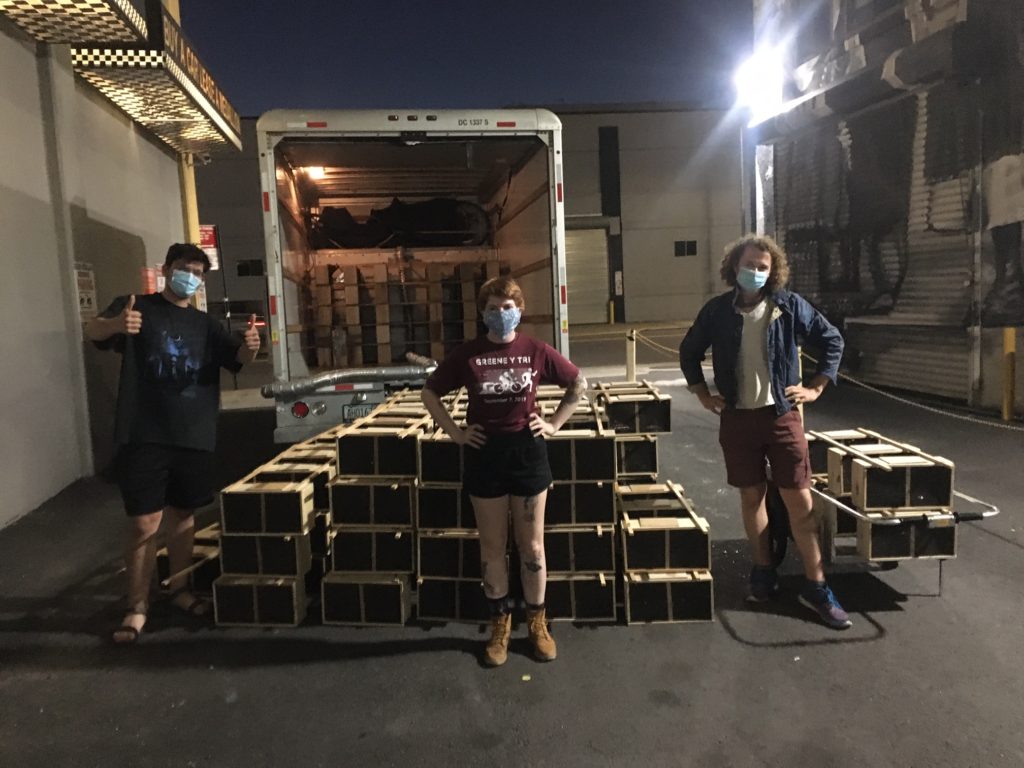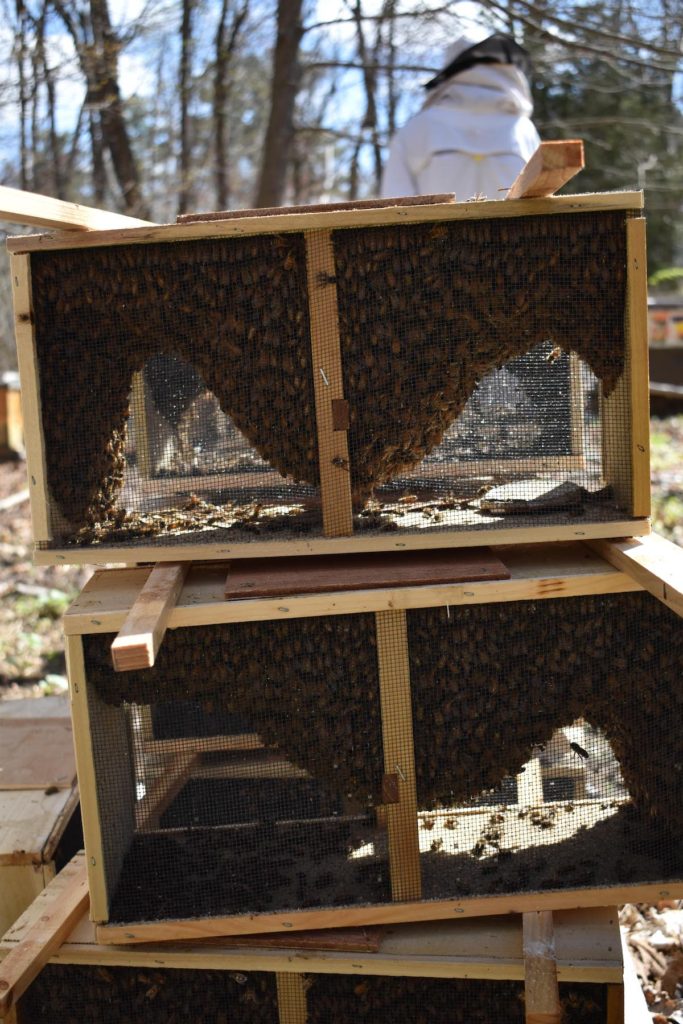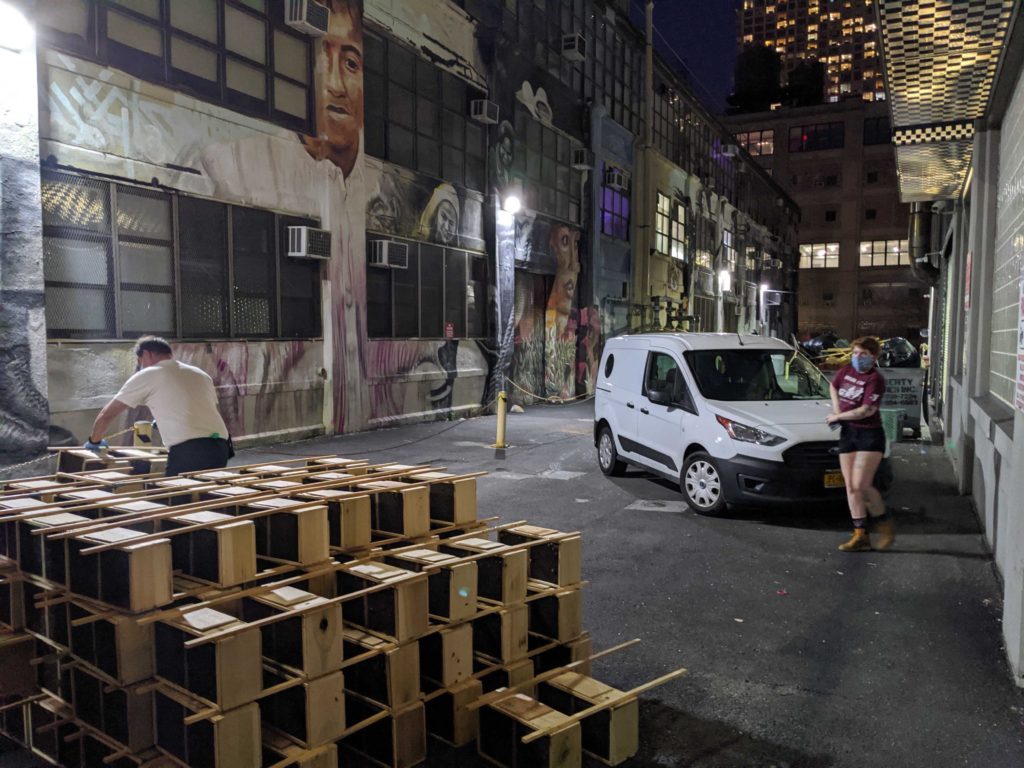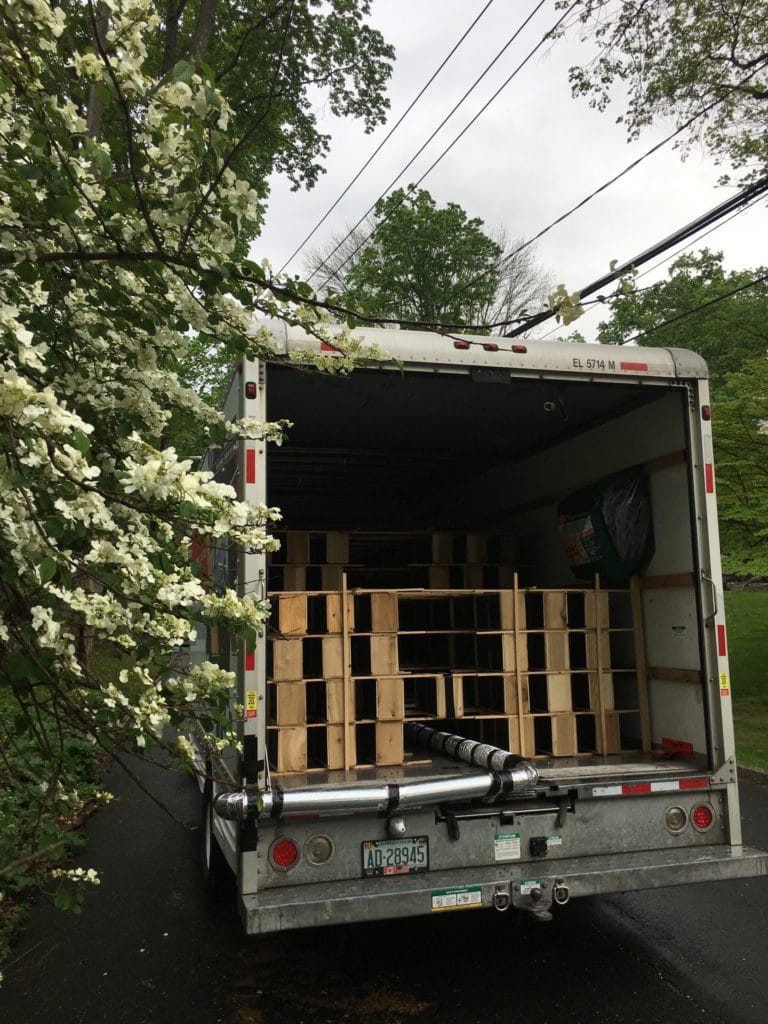Despite it all, we haul!
Like for the bees, spring is the busiest time of year for us at The Best Bees Company. The season signals our annual bee pick-up, or bee haul, from Georgia to Boston. But like everyone else on the planet, spring 2020 hasn’t been like any other we’ve experienced. The pandemic and an onslaught of tornadoes caused delays in our schedule. Despite these obstacles, we kept pushing forward. Our mentality was: “the haul must go on.” And it did.
Throughout the COVID-19 crisis, beekeepers have remained on the job as essential workers. Bee populations are critical for pollinating the environment we rely on, now more than ever. In fact, 1/3 of the food we consume is thanks to bee pollination! This year’s haul was completed by two of our Boston-based beekeepers, Lucas and Anthony.

Traveling with 2.5 Million Pollinators
Roughly 40% of our nation’s beehives die annually, and in regions where the winters are harsh, the likelihood of longlasting colonies is even more uncommon. We replenish our non-overwintered hives from southern sources where the climate allows for a robust breeding season. This ensures that the bee colonies are ripe for the taking when spring arrives in New England.
During this bee haul, we relocated over 250 beehives across 2 regions. Each package consists of a self-contained, self-supporting colony with 10,000 worker bees and one queen. If you’re doing the math, you’ll realize that 250 beehives with 10,000 worker bees add up rather quickly. The queen is new to the hive, placed by the beekeepers at the apiary before we depart. She’s confined in a cage for the journey to make sure she’s protected as she establishes her reign.

The bees traveled in a ventilated truck to help them regulate their temperatures and survive the rigors of the trip. The first leg of the journey took 12 hours of travel time to the site of the first installs in Washington DC. Our drivers had to keep the truck in motion for the ventilation system to work properly, so there wasn’t a lot of time to stop for breaks. When it comes it our bees, though, we do whatever it takes to make sure they arrive safely.
Onward and Upward
Lucas and Anthony dropped off nearly 2 million honeybees to our regional teams in DC and New York City. These beehives will flourish in their new homes up and down the Atlantic coast. Once the pass-off was complete, they made their way back home to Boston, where 50 packages were installed in our reserve apiary.

For our Boston-area clients, the wait for your bees is almost over! Over the next 2 weeks, 4 more beekeepers will make the journey to Georgia, where we will stock up and distribute a whopping 7.5 million honeybees. These new colonies will find their homes on the rooftops, office campuses, gardens, and backyards of our clients across New England.
In these uncertain times, we hope that our continued efforts to replenish bee populations across the Northeast will spread a message of optimism and promise to our communities.






